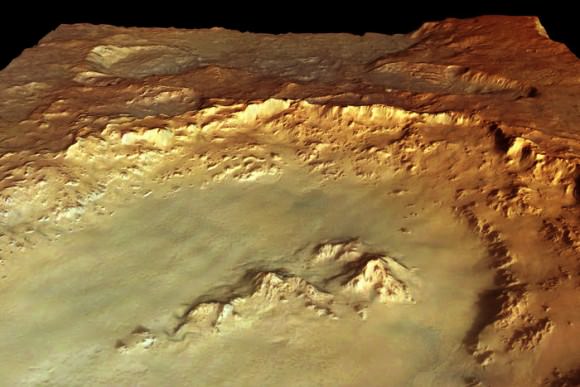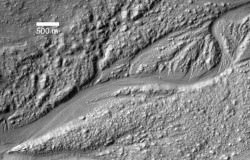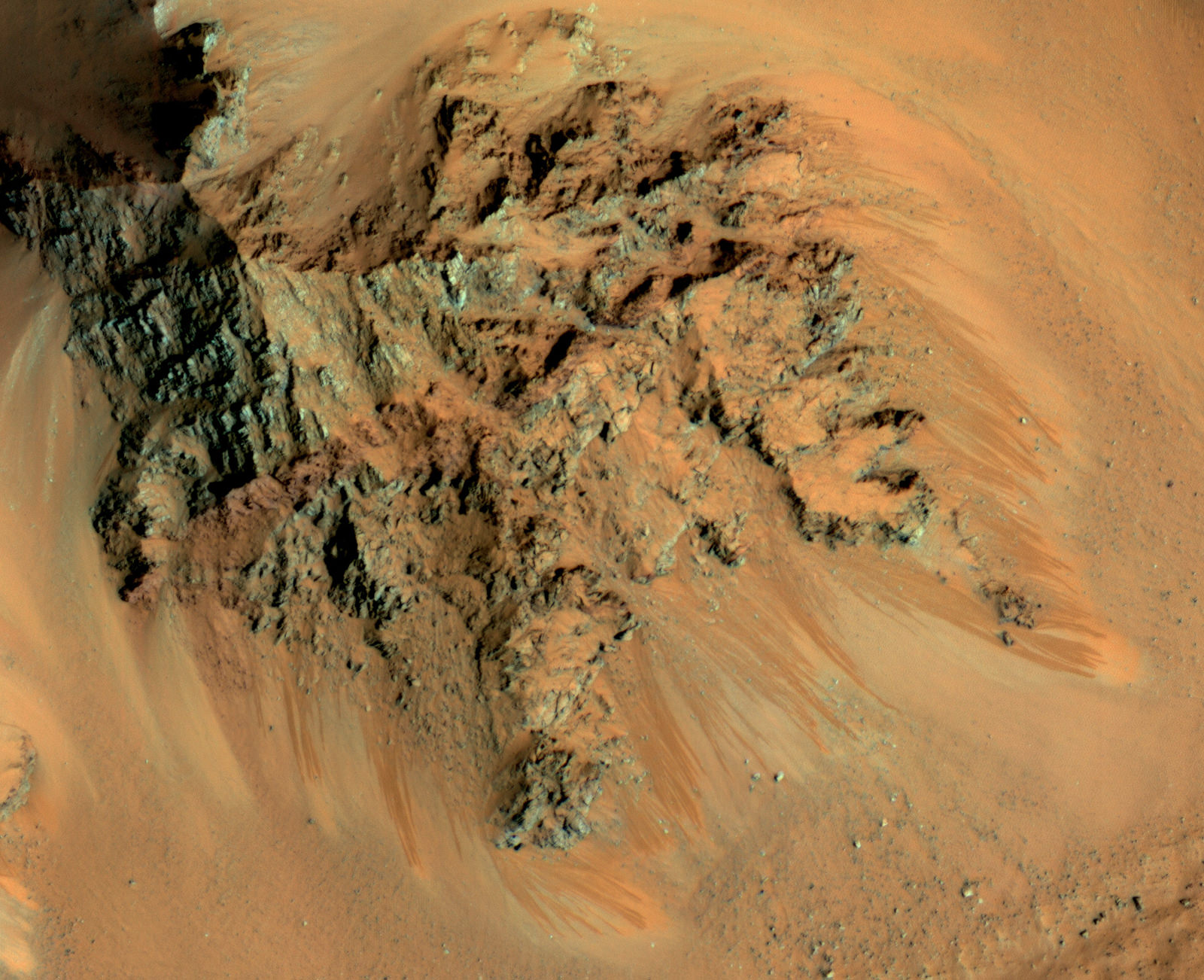As the midsummer Sun beats down on the southern mountains of Mars, bringing daytime temperatures soaring up to a balmy 25ºC (77ºF), some of their slopes become darkened with long, rusty stains that may be the result of water seeping out from just below the surface.
The image above, captured by the HiRISE camera aboard NASA’s Mars Reconnaissance Orbiter on Feb. 20, shows mountain peaks within the 150-km (93-mile) -wide Hale Crater. Made from data acquired in visible and near infrared wavelengths the long stains are very evident, running down steep slopes below the rocky cliffs.
These dark lines, called recurring slope lineae (RSL) by planetary scientists, are some of the best visual evidence we have of liquid water existing on Mars today – although if RSL are the result of water it’s nothing you’d want to fill your astro-canteen with; based on the first appearances of these features in early Martian spring any water responsible for them would have to be extremely high in salt content.
According to HiRISE Principal Investigator Alfred McEwen “[t]he RSL in Hale have an unusually “reddish” color compared to most RSL, perhaps due to oxidized iron compounds, like rust.”
See a full image scan of the region here, and watch an animation of RSL evolution (in another location) over the course of a Martian season here.


Hale Crater itself is likely no stranger to liquid water. Its geology strongly suggests the presence of water at the time of its formation at least 3.5 billion years ago in the form of subsurface ice (with more potentially supplied by its cosmic progenitor) that was melted en masse at the time of impact. Today carved channels and gullies branch within and around the Hale region, evidence of enormous amounts of water that must have flowed from the site after the crater was created. (Source.)
The crater is named after George Ellery Hale, an astronomer from Chicago who determined in 1908 that sunspots are the result of magnetic activity.
Read more on the University of Arizona’s HiRISE site here.
Sources: NASA, HiRISE and Alfred McEwen
UPDATE April 13: Conditions for subsurface salt water (i.e., brine) have also been found to exist in Gale Crater based on data acquired by the Curiosity rover. Gale was not thought to be in a location conducive to brine formation, but if it is then it would further strengthen the case for such salt water deposits in places where RSL have been observed. Read more here.

